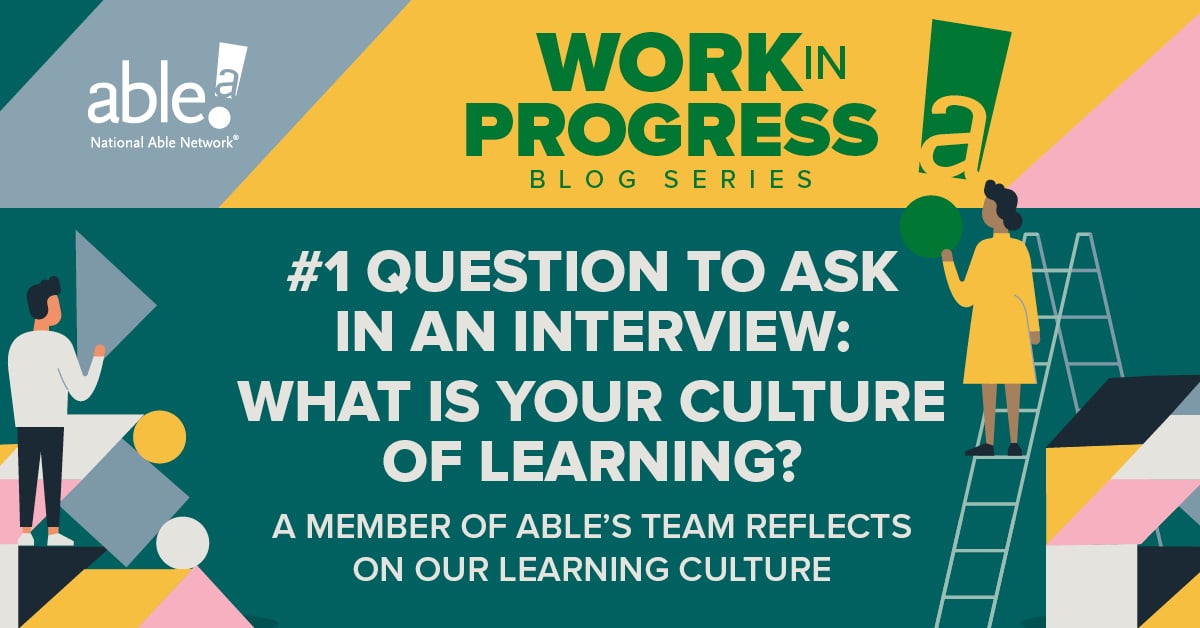A recent article from CNBC.com challenges employees to ask their leaders about what kind of “culture of learning” is available to them take advantage of. In this case, a culture of learning is everything from career coaching and development to taking risks and rewarding performance improvement.
In essence, a healthy culture of learning encourages employees to think outside the box, take advantage of growth opportunities, and gain skills that weren’t necessarily listed on the job description.
A culture of learning is crucial for any company that is interested in growing and retaining talent. At National Able Network, this is no exception. Recently I was given the opportunity to attend the annual National Association of Workforce Boards (NAWB) conference in Washington, D.C. Because Able is just one part of a large system, attending a conference like NAWB is vital towards forming a more complete understanding of the workforce system and building relationships with other organizations that play a role in the workforce development industry.
The NAWB conference is a sprawling two-and-a-half day conference hosted at the Washington Hilton, one of the city’s most prominent hotels. This year, more than 1300 people from around the country — and every level of the public workforce system — were in attendance.
General sessions included talks by Acting Secretary of Labor Julie Su, Governor of Maryland Wes Moore, Senior Advisor to the President (and former Secretary of Labor) Tom Perez, as well as panel discussions with business representatives from IBM, Walmart, Amazon, and numerous small businesses from across the country.
These speakers generally offered a high-level overview of workforce trends and where the industry is going. According to these leaders, the concept of “skills-based hiring” (or the de-emphasis of a four-year degree in hiring decisions) is gaining momentum. This is generally a good trend, and one that service providers like Able need to be aware of to better serve the individuals looking for training and upskilling opportunities.
The breakout sessions on offer ran the gamut of workforce topics, but two of the most interesting were on the Australian workforce system (and how it compares to the United States), and how to understand and use labor market information compiled by the Bureau of Labor Statistics.
Both sessions were insightful for gaining a rounded view of the system. In Australia, for example, the federal government plays a much larger role in connecting people with employment, and the eligibility requirements to participate in the workforce system are much more stringent. As for the BLS session, it was extremely helpful to learn how the government organizes the vast amounts of data is collects and how it can be put to use in grant proposals.
These two sessions were just the tip of the iceberg for learning opportunities. Networking, of course, also played a prominent role in the benefits NAWB had to offer. This conference was invaluable — and a perfect example of Able’s culture of learning.

